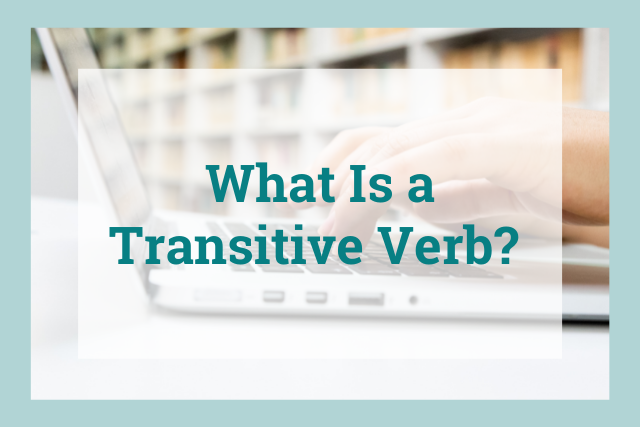
When you’re writing, it’s important to understand the different grammatical roles that a word can play.
You probably know the different parts of speech—nouns, verbs, prepositions, and so on—but each of those is a category of its own and has its own subcategories.
For instance, there are many types of verbs, and one of those types is called the transitive verb.
A transitive verb is an action verb whose action is received by a direct object.
Read on to learn how to identify a transitive verb and what some examples look like in writing.
What Is a Transitive Verb?
A transitive verb is an action verb that requires someone or something to receive that action (a direct object).
Take a look at the following examples of transitive verbs:
- “Gabrielle fixed the broken radio.”
In this case, “fixed” is the transitive verb, and “the broken radio” is the object being fixed (the direct object).
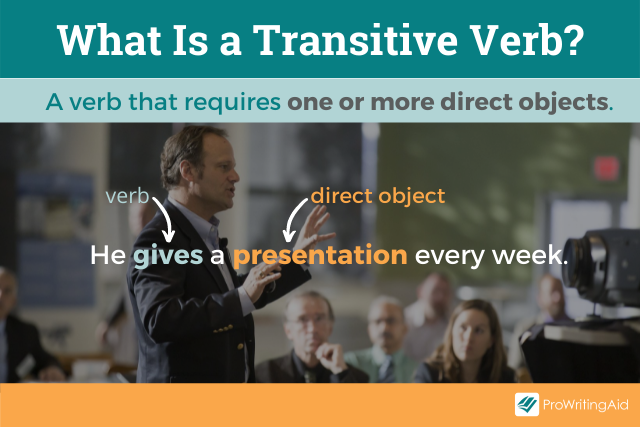
- “Abdul reads the newspaper.”
In this case, “reads” is the transitive verb, and “the newspaper” is the object being read.
- “That scary dog bit me.”
In this case, “bit” is the transitive verb, and “me” is the person being bitten.
The most common structure of a sentence with a transitive verb is:
Subject + action verb + direct object
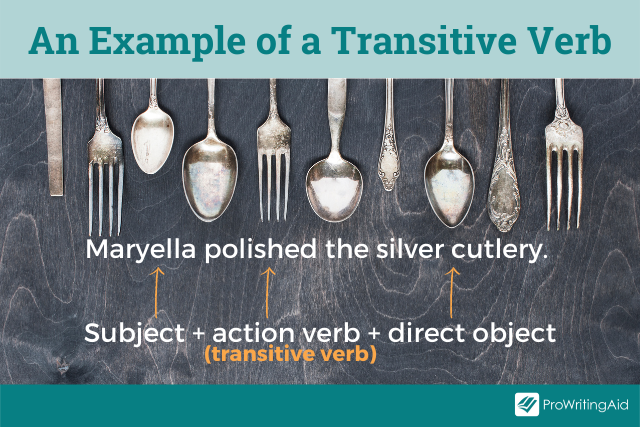
The word “transitive” comes from the idea that the action must transition through the verb to an object in order to complete its meaning.
For example, “Gabrielle fixed” is not a complete sentence, and doesn’t make sense on its own. You need to add in the direct object to finish the sentence: “Gabrielle fixed the broken radio.”
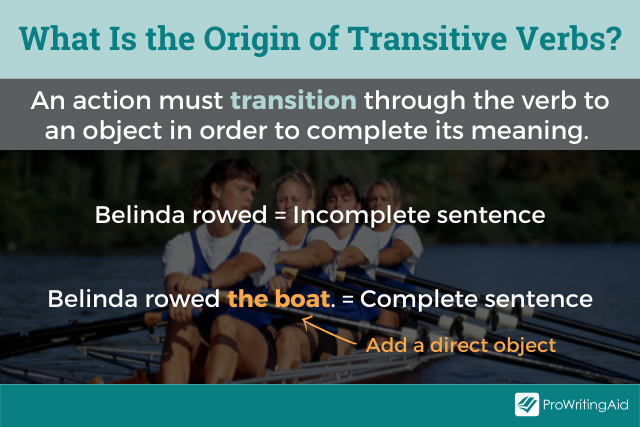
How Can I Identify Transitive and Intransitive Verbs?
Action verbs can either be transitive or intransitive. There are two methods you can use to figure out which type of verb you’re dealing with.
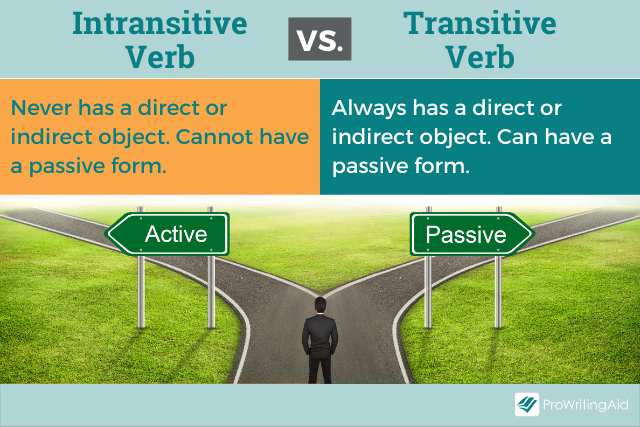
Method 1: A Transitive Verb Has a Direct Object, While an Intransitive Verb Does Not
The simplest way to identify a transitive word is to see if you can find a direct object in the sentence.
A direct object is something or someone who receives the action being performed.
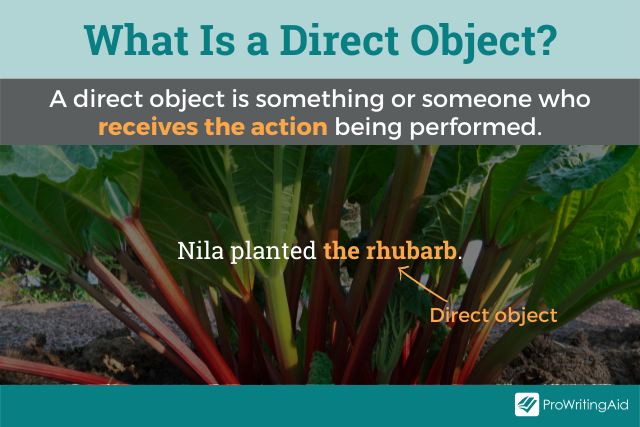
When you see an action verb, ask yourself, “What’s the object receiving this action?”
If the action is done to something or someone, you’re looking at a transitive verb.
For example, “Jeremy kicked the soccer ball.” Here, the kick is being received by the soccer ball, so you know the verb is transitive.
An intransitive verb, on the other hand, doesn’t have a direct object. Consider the sentence “Jeremy laughed.”
The verb is “laughed”, and there’s no object in the sentence that needs to receive the action.
Don’t be fooled if there are other words after the verb—they aren’t necessarily a direct object.
For example, you could say “Jeremy laughed merrily”, which places an extra word after “laughed”.
But the word “merrily” is an adverb that tells us more about the verb, not a direct object that receives the action.
Method 2: A Transitive Verb Can Have a Passive Form, While an Intransitive Verb Cannot
Another trick you can use is to try to imagine the verb in a passive form (Direct Object + “was” + Transitive Verb).
Transitive verbs can have a passive form, while intransitive verbs cannot.
Here are some examples of transitive verbs in the passive form, which sound logical and correct:
- “Gabrielle fixed the broken radio.” → “The broken radio was fixed.”
- “Tommy reads the newspaper.” → “The newspaper was read.”
- “That scary dog bit me.” → “I was bitten.”
For contrast, here are some examples of intransitive verbs in the passive form, which sound rather nonsensical:
- “The soccer ball was existed.” (“existed” is intransitive)
- “The people was laughed.” (“laughed” is intransitive)
- “I was smiled.” (“smiled” is intransitive)
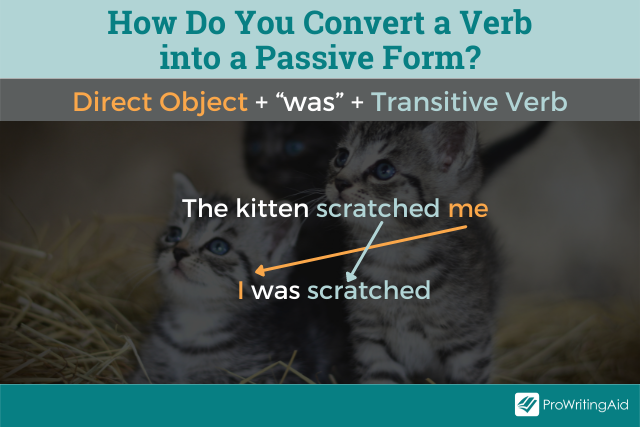
The passive voice places the reader's focus on the object rather than the action. This means it takes longer for the reader to understand who or what is completing the action.
If you can, convert your passive transitive verbs to active ones to make your writing more engaging.
ProWritingAid will highlight passive transitive verbs in your writing and suggest active rephrasings.
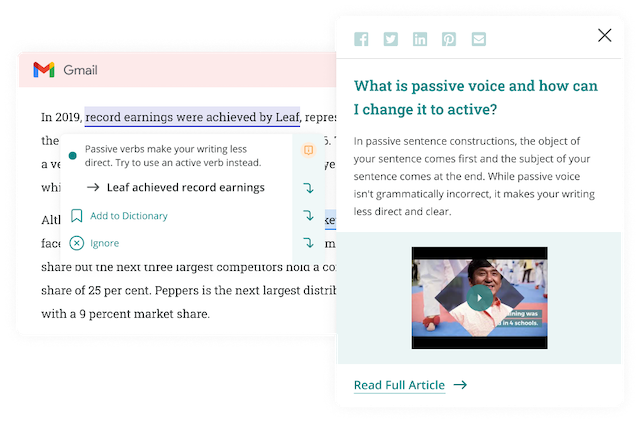
Try the passive voice check with a free ProWritingAid account.
Can the Same Verb Be Both Transitive and Intransitive?
There are verbs that can be transitive or intransitive, depending on whether the sentence has a direct object or not.
Here are some examples of verbs that can work either way:
Verb: “to play”
- Transitive: “I will play the violin.”
- Intransitive: “I will play tomorrow night.”
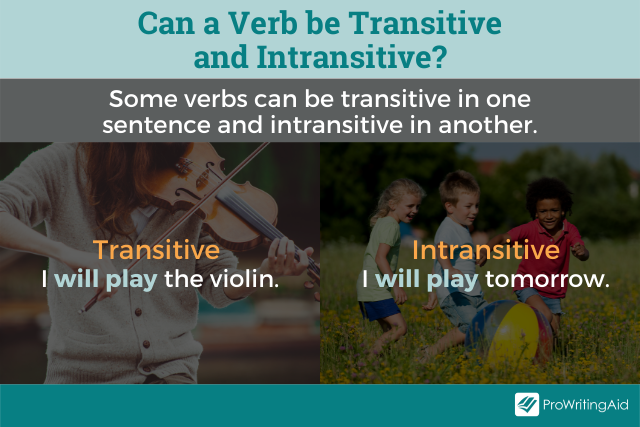
Verb: “to walk”
- Transitive: “Can you walk my dog?”
Intransitive: “Can you walk toward me?”
Verb: “to eat”
- Transitive: “She eats a lot of chocolate.”
- Intransitive: “She eats alone.”
Verb: “to run”
- Transitive: “I ran the whole organization.”
- Intransitive: “I ran away.”
What Are Some Examples of Transitive Verbs in Writing?
Let’s take a look at some transitive verbs in famous literary passages.
“Moonlight drowns out all but the brightest stars."
– J.R.R. Tolkien, The Lord of the Rings
- The subject: moonlight
- The transitive verb: drowns out
- The direct object: all but the brightest stars

"There are years that ask questions and years that answer."
– Zora Neale Hurston, Their Eyes Were Watching God
- The subject: years
- The transitive verb: ask
- The direct object: questions
"I loved her against reason, against promise, against peace, against hope, against happiness, against all discouragement that could be.”
– Charles Dickens, Great Expectations
- The subject: I
- The transitive verb: loved
- The direct object: her
"Well, I must endure the presence of a few caterpillars if I wish to become acquainted with the butterflies."
– Antoine de Saint-Exupéry, The Little Prince
- The subject: I
- The transitive verb: endure
- The direct object: the presence of a few caterpillars
“I hope she’ll be a fool—that’s the best thing a girl can be in this world, a beautiful little fool.”
– F. Scott Fitzgerald, The Great Gatsby
- The subject: she
- The transitive verb: will be
- The direct object: a fool
“I gave my whole heart up, for him to hold.”
– Geoffrey Chaucer, The Canterbury Tales
- The subject: I
- The transitive verb: gave up (note that this phrase is split around the direct object, as a stylistic choice)
- The direct object: my whole heart
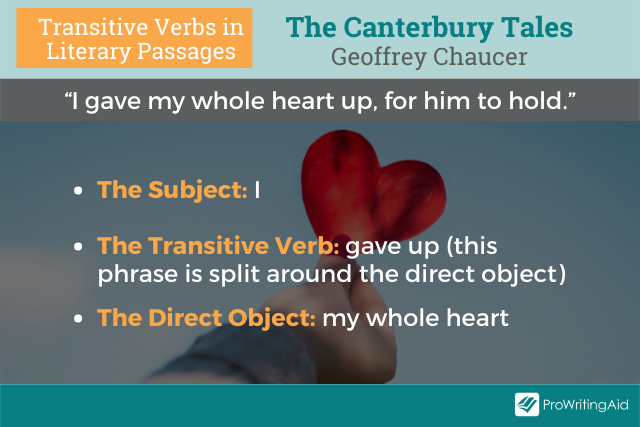
“Time, which sees all things, has found you out.”
– Sophocles, Oedipus the King
- The first subject: time
- The first transitive verb: sees
- The first direct object: all things
- The second subject: time
- The second transitive verb: found out (note that this phrase is split around the direct object, as a stylistic choice)
- The second direct object: you
"If you tell the truth you do not need a good memory!"
– Mark Twain, Adventures of Huckleberry Finn
- The first subject: you
- The first transitive verb: tell
- The first direct object: the truth
- The second subject: you
- The second transitive verb: need
- The second direct object: a good memory
"I’ve got the key to my castle in the air, but whether I can unlock the door remains to be seen."
– Louisa May Alcott, Little Women
- The first subject: I
- The first transitive verb: got
- The first direct object: the key
- The second subject: I
- The second transitive verb: unlock
- The second direct object: the door

When Can I Use Transitive Verbs?
Now you know what transitive verbs are, you'll spot them everywhere. You can use them in everything from essays, creative writing, and emails to everyday speech to bring your writing to life.


